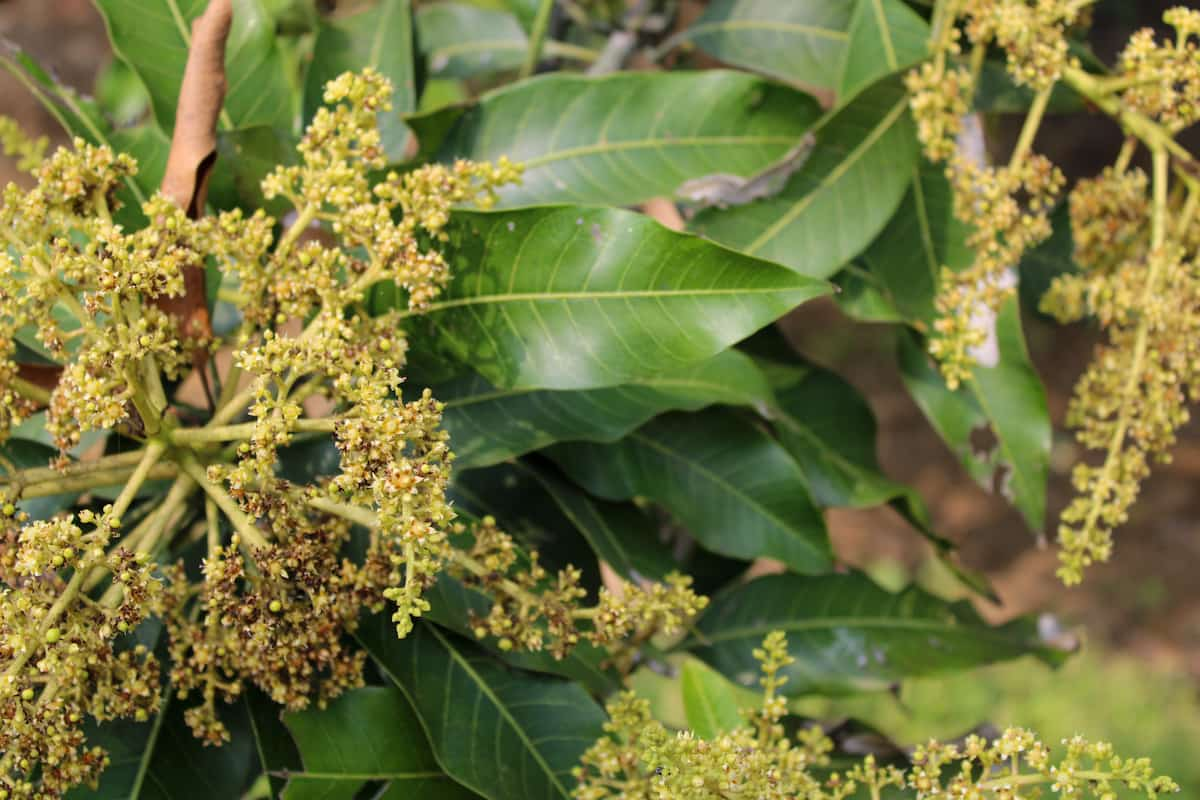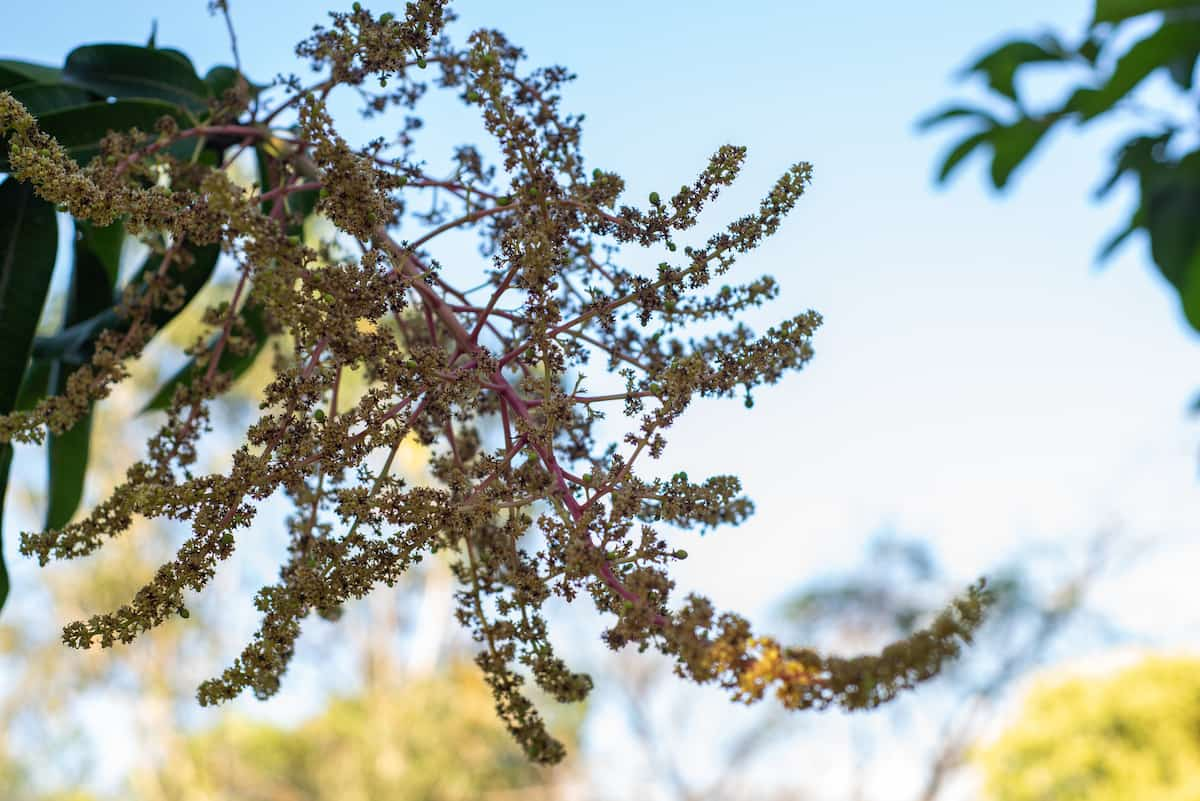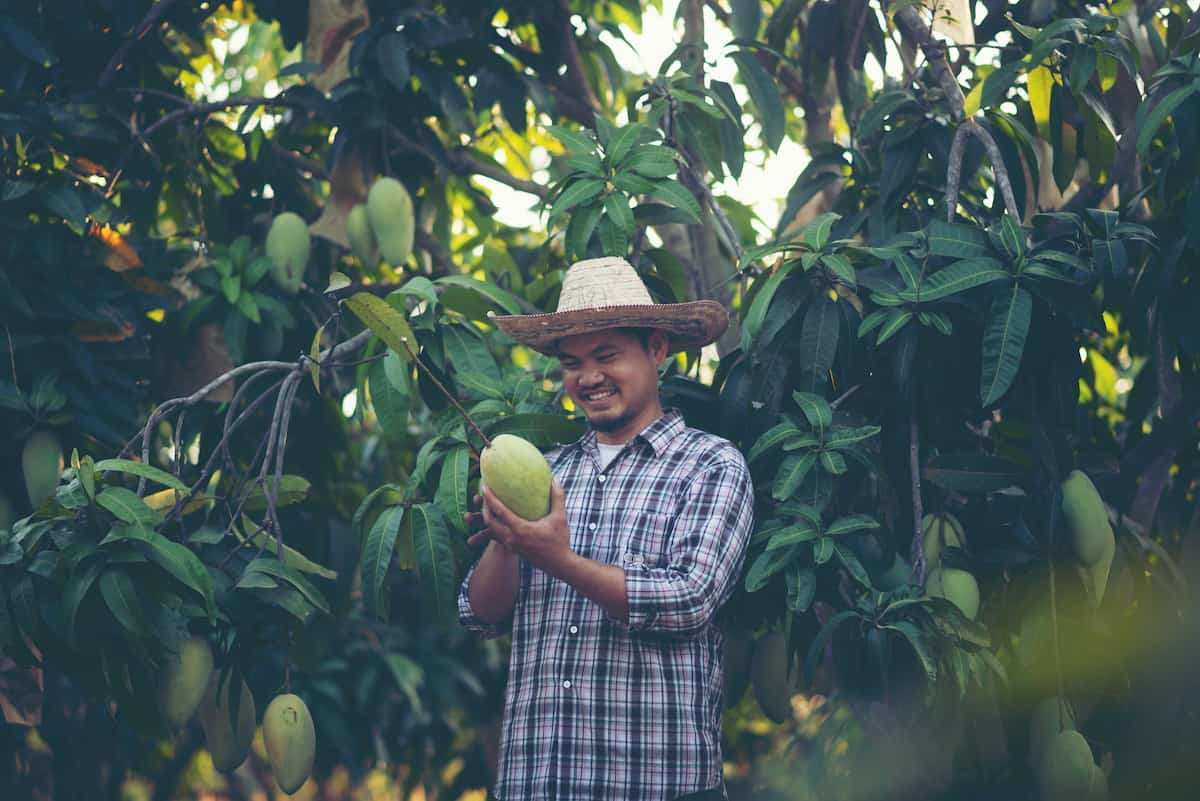The Mango Shoot Gall Psyllid, Apsylla cistellata, belonging to the Family Psyllidae of the Order Homoptera, is a small, black, sap-sucking insect that feeds on the leaves and shoots of mango trees. This pest is native to India, Australia, and South-East Asia. It causes damage by forming galls on mango tree leaves, shoots, and fruit, reducing yield and quality, and making the fruits unmarketable.

It can also contribute to the spreading of various diseases, such as Mango Leaf Curl, Mango Dieback, and Mango Bacterial Canker. To effectively manage this pest, it is important to understand its life cycle, its preferred habitats, and the best methods for controlling it. This article will provide an overview and discussion of the Mango Shoot Gall Psyllid Pest in Mango crops, including its symptoms, identification techniques, and control.
Shoot Gall Psyllid Pest Management in Mango
Life Cycle of Mango Shoot Gall Psyllid Pest in Mango Crop
The life cycle of the mango shoot gall psyllid pest has five stages. They are egg, nymph, pupa, adult, and overwintering. The egg stage of the Mango Shoot Gall Psyllid Pest is laid in the grooves and crevices of the mango tree bark or on the surface of leaves. They hatch within two to four weeks. The nymph stage of the Mango Shoot Gall Psyllid Pest is the juvenile stage, where they feed on the mango tree leaves. They feed on the underside of mango tree leaves and cause distorted growth of shoots and leaves.
They also secrete a sticky substance that causes the leaves to curl and form galls. The nymphs molt several times and eventually become adults. The pupal stage of the Mango Shoot Gall Psyllid Pest is the transitional stage between the nymph and the adult. The pupae are found within the curled leaves or in the crevices of the mango tree bark. The pupae emerge as adults within two to three weeks. The adult stage of the Mango Shoot Gall Psyllid Pest is the reproductive stage.
They feed on the underside of the mango tree leaves and secrete a sticky substance that causes the leaves to curl and form galls. The adults mate and lay eggs which hatch within two to four weeks. The overwintering stage of the Mango Shoot Gall Psyllid Pest is where the adults survive the winter by hibernating in crevices of the mango tree bark or migrating to warmer climates. The adults emerge in spring to lay eggs and start the cycle again.
Occurrence of Mango Shoot Gall Psyllid Pest in Mango Crop
- Location of Mango Shoot Gall Psyllid pest: This pest infests mango crops in India, Africa, Bangladesh, Nepal, Sri Lanka, Myanmar, the United States, Mexico, Brazil, Colombia, Ecuador, and Peru.
- Host range: The mango shoot gall psyllid pest infects crops like mango, citrus, oranges, lemons, pineapple, papaya, guava, banana, grapes, and avocado.
Factors Favoring the Population Increase of Mango Shoot Gall Psyllid Pest in Mango Crop
- The insect is active during the summer when the temperatures are warm and the humidity is high.
- In its native habitat, various insects and other organisms keep the pest in check, but it has no natural enemies in other parts of the world. This allows the pest to reproduce and spread unchecked.
- Availability of suitable host plants, mango trees are the primary host of this pest, but other hosts may include other members of the Anacardiaceae family, such as cashew and pistachio.
- Ability to reproduce quickly, The adult can lay up to 150 eggs at a time, which can hatch within 48 hours. This can contribute to its population increase.
- The presence of alternate hosts, such as papaya, avocado, walnut, etc., will increase the pest populations.
Identification of Mango Shoot Gall Psyllid Pest in Mango Crop
- Eggs: The eggs are small, yellowish-white in color, and are laid singly or in small clusters.
- Nymphs: The nymphs are apterous, greenish-brown in color, and have a long, slender body with a pair of long antennae.
- Pupae: The pupae are yellow-brown and are encased in a cocoon.
- Adults: The adults are yellowish-brown and have two pairs of wings.
In case you missed it: Shoot Borer Pest Management in Mango: Symptoms, Treatment, Chemical, Biological, Natural, and Organic Control

Damage Symptoms of Mango Shoot Gall Psyllid Pest in Mango Crop
- The adult females lay eggs in the midribs of the leaves and lateral axis of the plant’s new leaves.
- The nymphs feed on the tender shoots of the mango, and the adult psyllids feed on the cell sap of the mango leaf buds.
- This pest feeds on the mango leaf buds and causes green-colored conical galls to form on the shoots in the leaf axis. The nymphs will overwinter in these galls.
- As a result, the growth of the shoot is stunted, and there will be no flowering and fruit set.
- The leaves at the shoot tip become thick and leathery and stick together, forming a protective cover for the gall. This can cause the leaves to drop prematurely.
- The galls may also secrete a sticky substance which can attract other pests to the tree.
Percentage of Yield Loss in Mango due to Mango Shoot Gall Psyllid Pest
- In India, the yield losses due to mango shoot gall psyllid pests are up to 80%. In Bangladesh, the percentage of yield loss is around 50%. In China, the losses are up to 40%. In the United States, the losses are 25%. In Mexico and Brazil, it is 20% and 15% respectively. In Africa, it is at 10%. In Australia, it is up to 50%. In Indonesia and Vietnam, the yield losses are 25%. In Thailand, it is 40%. In the Philippines, it is 40%.
- The Economic Threshold Level (ETL) for the mango shoot gall psyllid pest is set at 5 to 10 shoot gall psyllids per tree.
Cultural Control of Mango Shoot Gall Psyllid Pest in Mango Crop
- Practice good sanitation practices, such as regularly cleaning, disinfecting, and pruning tools and equipment.
- Pruning and fertilizing the trees regularly, removing any affected shoots, and discarding them so the pest cannot spread to other trees is an effective control.
- Promote the growth of natural enemies by planting flowering plants around the mango trees, as this will attract beneficial insects like ladybugs and lacewings, which can help to reduce the population of A. cistellata.
Biological Control of Mango Shoot Gall Psyllid Pest in Mango Crop
- Predatory bug, Aenuromychus lounsburyi, feeds on the eggs and nymphs of the psyllid, thus reducing their population.
- Other predators that can be used include brown lacewings, ladybird beetle, and purplish pirate bugs.
- Parasitoid wasp Aenasius bambawalei lays its eggs inside the eggs of the psyllid, killing them before they hatch.
- Different Entomopathogenic fungi, such as Beauveria bassiana, Metarhizium anisopliae, and Isaria fumosorosea, can infect and kill the psyllids.
Chemical Control of Mango Shoot Gall Psyllid Pest in Mango Crop
- Spray Monocrotophos, Parathion, and Metasystox at two weeks intervals from mid-August to control the pest.
- These chemicals are usually applied through foliar application. But avoid using the same chemical for spraying every time.
Organic Control of Mango Shoot Gall Psyllid Pest in Mango Crop
- Use natural pesticides that are plant-based products effective in controlling the pest. Some of these include neem oil, garlic oil, and pyrethrum. These natural pesticides can be applied directly to the affected area or combined with other methods.
- Use physical barriers, such as insect nets, to prevent the pest from entering the crop. And traps can be used to capture the pest and reduce its population.
Preventive Measures for Control of Mango Shoot Gall Psyllid Pest in Mango Crop
- Prefer resistant mango varieties that are less susceptible to attack by the pest.
- Monitor the crops regularly to identify pest infestation in the early stages to keep it under control.
- Proper irrigation, fertilization, and weed control practices can help reduce pests’ incidence.
In case you missed it: Mango Stem Borer Pest Management: Symptoms, Treatment, Chemical, Biological, Natural, and Organic Control

Conclusion
The Mango Shoot Gall Psyllid Pest, Apsylla cistellata, is a major pest of mango crops, causing significant damage to the fruit and leaves. It is difficult to control and can cause economic losses to mango farmers. However, with effective integrated pest management, the spread of this pest can be reduced, and its impact on mango production minimized.
- Beneficial Insects in Pest Management
- Natural Solutions for Pest Control in Flower Gardens
- Types of Fungicides Used in Agriculture
- Common Issues in the Fruit Development Stage of Pomegranate Farming
- Fruit Development Issues in Papaya: Easy Solutions and Treatment
- Soil-Borne Diseases and How to Protect Your Plants
- Practices to Prevent Disease Spread in the Garden
- From Wilted to Thriving: How to Treat Root Rot Naturally in Houseplants
- Natural Remedies to Cure Brown Spots on Fig Tree Leaves